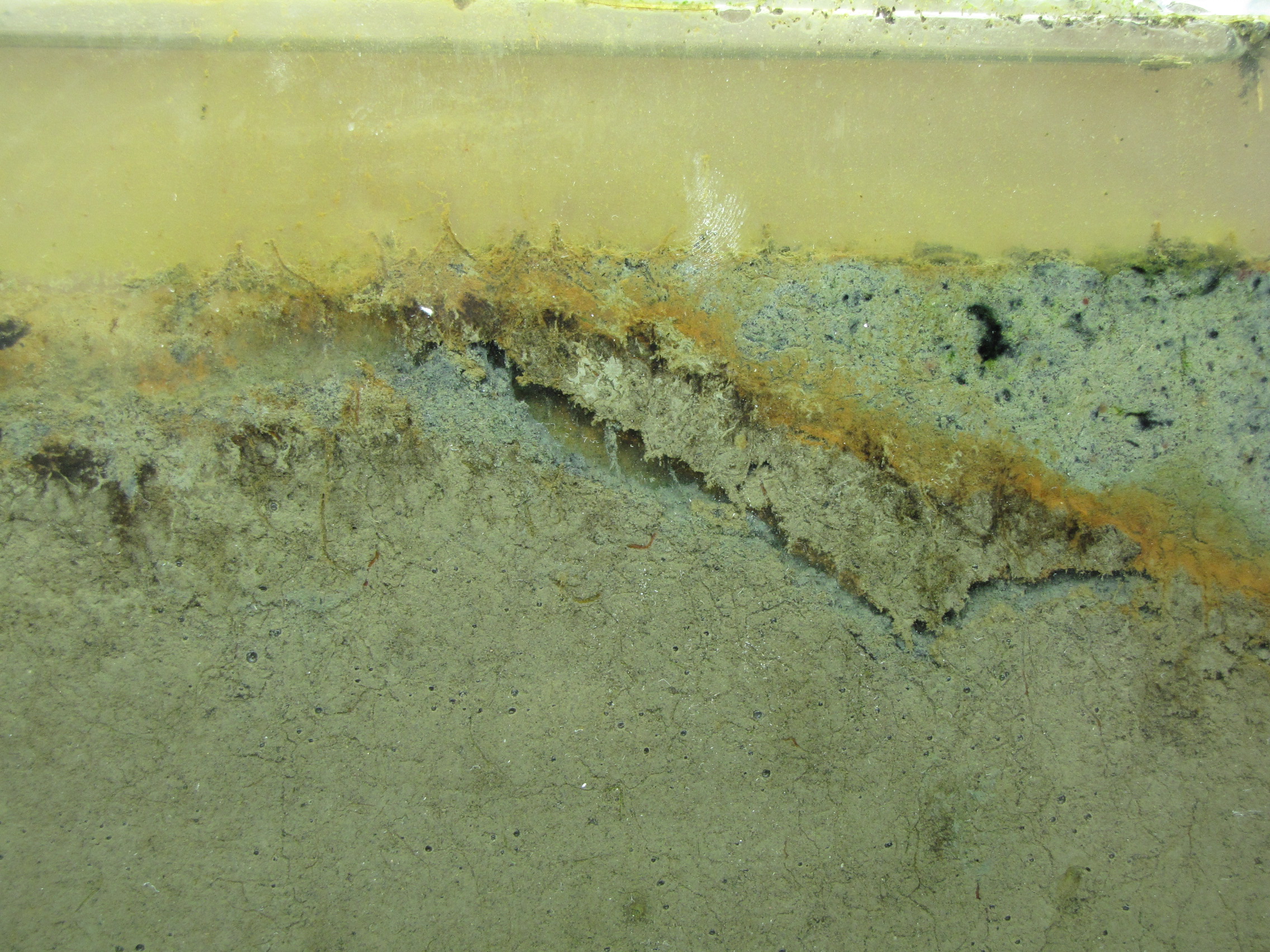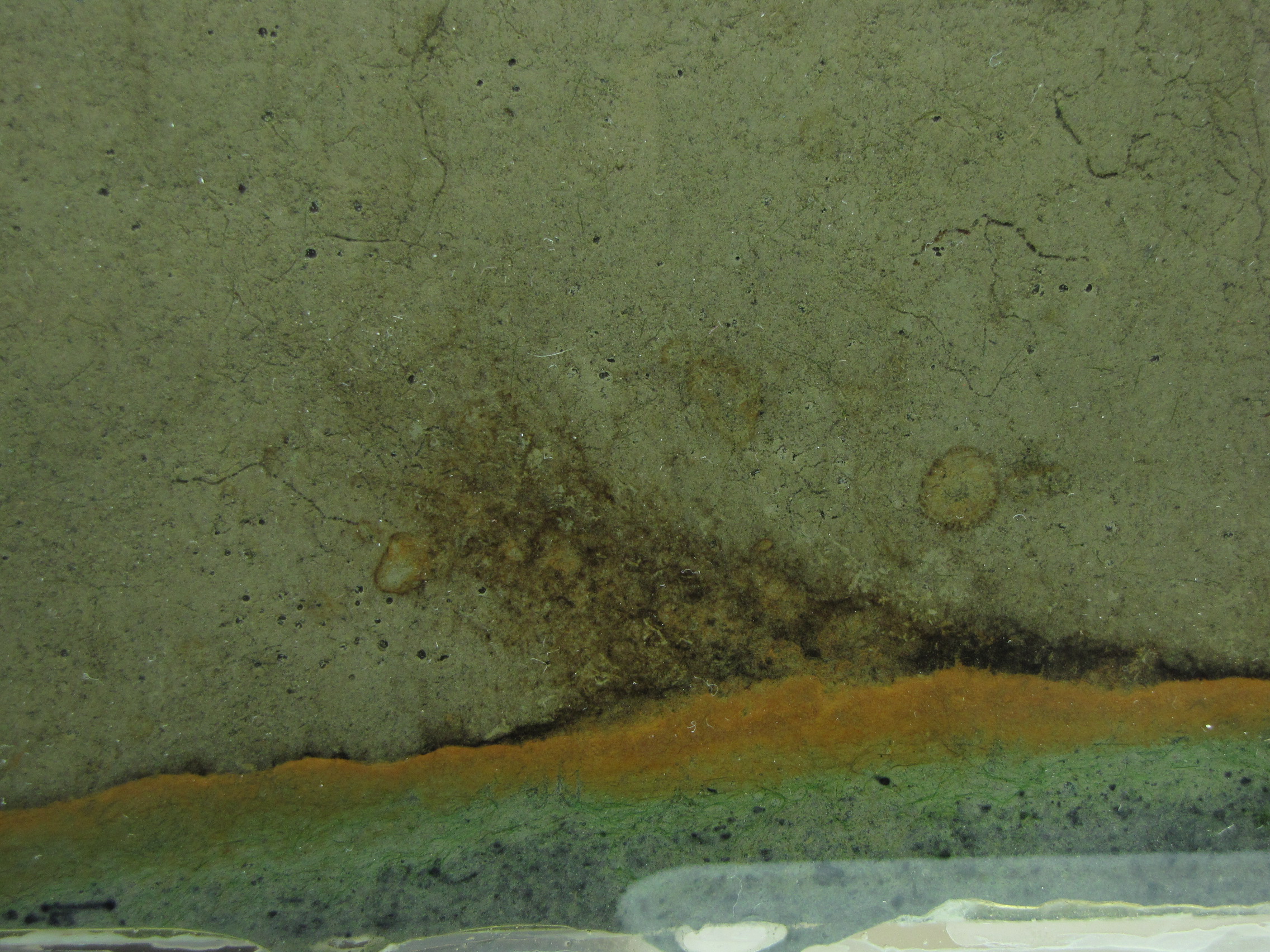The panel is changing more slowly now, but the oranges and greens are getting richer and the sulfur-enriched mud is showing more and coalescing black spots.
 The level of the mud dropped overnight. This could be due to settling of the mud and/or release of gas bubbles. There are some water-filled gaps, and the water level is lower. There is now air above the entire length of the water surface, instead of just at the opening of the panel (top left). Note that there is also a left to right gradient in the water, which was already present before settling. Near the opening, there is brownish/red colonies growing on the walls, probably aerobes (requires oxygen) explaining why its not present further from the opening. The water is murky from left to right, perhaps microbes that can tolerate low levels of oxygen, up to a point near the right side where the water layer is still clear.
The level of the mud dropped overnight. This could be due to settling of the mud and/or release of gas bubbles. There are some water-filled gaps, and the water level is lower. There is now air above the entire length of the water surface, instead of just at the opening of the panel (top left). Note that there is also a left to right gradient in the water, which was already present before settling. Near the opening, there is brownish/red colonies growing on the walls, probably aerobes (requires oxygen) explaining why its not present further from the opening. The water is murky from left to right, perhaps microbes that can tolerate low levels of oxygen, up to a point near the right side where the water layer is still clear.





I added some Calcium sulfate to enrich for sulfur cycling organisms. But it is not necessary to do that, there is some naturally occurring sulfur in the soil to start with.
Beautiful images. Where does all that sulfur come from?
Hydrogen sulfide is produced but at levels that are not dangerous. You can barely smell it if you stick your nose right up to it. The number of potential pathogens in there is likely about the same as in regular soil. There might be some but they are not likely growing at higher levels than you would encounter in the original pond itself.
I have analyzed the microbial community of similar Winogradsky columns (made from mud from a pond near Williams College) and didnt find high levels of anything of concern. We did find, though, low numbers of bacteria that suggested that the pond form which we obtained the mud may have been contaminated (at some point in the past) perhaps with sewage and other wastes. That is typical of urban/suburban streams, which get lots of chemical run-off and some leakage from aging septic and sewer systems. Im sure I will see some evidence of that in my analysis when I do a similar study of Winogradskys from around here.
Nice!! Are you at all concerned about the buildup of potentially toxic / pathogenic material in the column? From the pictures it doesn’t look like it’s in a fume hood or anything like that…